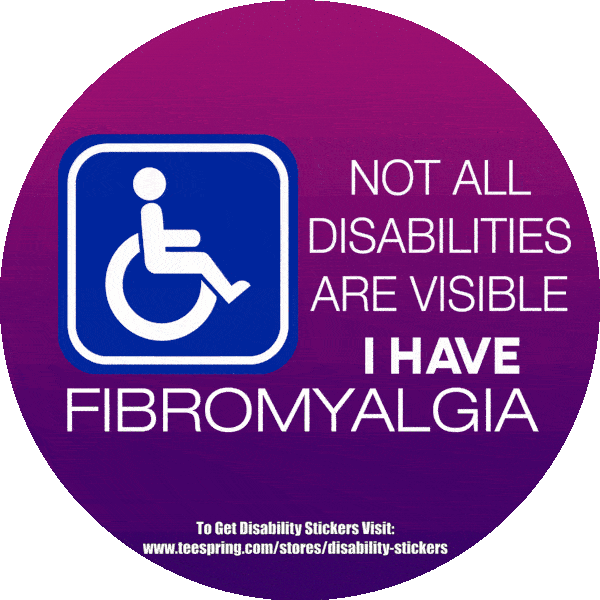Fibromyalgia can be a bewildering and multifaceted illness that impacts every part of your life-and your body. You have probably read about symptoms such as pain, fatigue and fibro fog, but the list of possible symptoms is far-reaching and body-wide.
A lot of people think some of the symptoms are so bizarre that they must be the only one who experiences it. Sound familiar? The truth is that millions of other people probably deal with it, too.
Below is “the big list” of 60 plus symptoms that’ll let you know that you are not alone. Knowing the full range of symptoms can help you track them, either to help your doctor reach a diagnosis or to help you identify triggers. It also helps to know you’re not the only person experiencing these and whether a particular symptom may stem from fibromyalgia or something else.
Some of the “symptoms” are noted as overlapping conditions, which means they commonly occur with fibromyalgia but are actually are conditions that need to be diagnosed and treated separately. Some of these are not generally listed in medical texts but are commonly mentioned by people with the condition.
Diagnosis based on symptoms
You do not have to have all of these symptoms in order to be diagnosed with this condition. We can have any combination of them and to varying degrees of severity. Your mix of symptoms may also change with time.
Some people have fairly constant levels of symptoms, but many of us experience symptoms flares and remissions. (Periods of reduced symptoms)
Unusual pain types
Those are the pains that essentially define the condition. They are types that are rare in other diseases and serve as the hallmarks of fibromyalgia.
>>heightened experience of pain (hyperalgesia)
>>skin, pain, extreme sensitivity to touch or temperature, allodynia
>>pain that ranges from mild to severe and may move around the body
>>nerve pain and abnormal sensations called paresthesias, tingling, burning, itching, shooting etc, especially in the arms.
General symptoms
Some of our symptoms involve multiple systems or are hard to classify, so here they are listed as general. They are not necessarily the most common. These include
>>extreme reactions, crash, often delayed, following physical exertion or stressful events
>>other family members with fibromyalgia, genetic predisposition
>>extreme sweating
>>allergies, as an overlapping condition
>>especially thick mucus
>>hemorrhoids
>>nose bleeds
Muscle/tissue/joint
Fibromyalgia is not a joint disease like arthritis, but it can involve some joint-related symptoms. Most and possibly all, cases involve symptoms of the soft tissues, including muscles and connective tissues, tendons, ligaments, fascia. They include:
>>morning stiffness
>>lax connective tissues, possibility leading to joint hyper mobility
>>muscle twitches
>>diffuse, low grade swelling or puffiness, not large amounts of inflammation
>>fibrocystic, lumpy, tender breast
>>jaw pain possibly from TMJ, temporomandibular joint disorder, as an overlapping condition
Cognitive
Often called fibro fog, this is one of the more pervasive and disabling set of symptoms, along with pain, fatigue and sleep problems. Many people report that fibro fog impairs them more than anything else;
>>difficulty speaking known words, other language impairments, dysphasia
>>directional disorientation
>>short-term memory impairment
>>forgetfulness
>>confusion
>>trouble concentrating
>>difficulty learning new information
>>difficulty processing or retaining the information you hear
>>problems with math or understanding numbers
>>impaired reading comprehension
>>periodic inability to recognize family surroundings
Sensory
These are neurological symptoms that are similar to pain, in that the input may be normal but our brain’s response to them is amplified. These are physiological responses to things in our environment and have nothing to do with us “making a big deal” out of something or “overreacting”
>>sensitivity to fragrance, possibly multiple chemical sensitivity, as an overlapping condition
>>sensitivity to pressure changes, temperature and humidity
>>sensitivity to light
>>sensitivity to noise
>>sensory overload
Neurological
We can also have the following neurological symptoms
>>poor balance and coordination
>>dizziness, possible fainting
>>headaches and migraines, as an overlapping condition
>>ringing ear, tinnitus, as an overlapping condition
Sleep-related
Sleep problems are almost as central to fibromyalgia as pain. In addition to general sleep dysregulation, we can have an array of sleep disorders.
>>light or broken sleep pattern with unrefreshing sleep
>>fatigue
>>insomnia as an overlapping condition
>>restless legs syndrome as an overlapping condition
>>sleep apnea, as an overlapping condition
>>sleep starts, falling sensations also called myoclonic jerks
>>teeth grinding, bruxism, as an overlapping condition
Heart-related
While these sound scary, we don’t have evidence suggesting that heart disease is especially common in fibromyalgia. Never assume that heart-related symptoms are “just” from fibromyalgia, though! Be sure you discuss any new symptoms or changes with your doctor right away.
>>mitral valve prolapse, as an overlapping condition
>>irregular heart beat (arrhythmia or postural hypostatic tachycardia syndrome) as an overlapping condition
>>pain that mimics a heart attack, frequently from costochondritis, as an overlapping condition
For support and Discussion join the group “Living with Fibromyalgia and Chronic Illness”
Subscribe to our website for Email notification of our new Posts. Like and Follow us on Facebook. Swipe Left to Read more on Fibromyalgia or Click Here …
Sources:
Campi LB, Jordani PC, Tenan HL, et al. Painful temporomandibular disorders and central sensitization: implications for management-a pilot study. International journal of oral and maillofacial surgery. 2017 Jan;46(1):104-110.
Devin J. Starlanyl. All rights reserved. Fibromyalgia (FMS) and Chronic Myofascial Pain (CMP) For Doctors and Other Health Care Providers.
Gelonch O, Garolera M, Valls J, et al. Executive function in fibromyalgia: comparing subjective and objective measures. Comprehensive psychiatry. 2016 Apr;66:113-22.
Yim YR, Lee KE, Park DJ et al. Identifying fibromyalgia subgroups using cluster analysis: relationships with clinical variables. European journal of pain. 2017 Feb;21(2):374-384.
Zoppi M, Maresca M. Symptoms accompanying fibromyalgia. Reumatismo. 2008 Jul-Sep;60(3):217-20.
